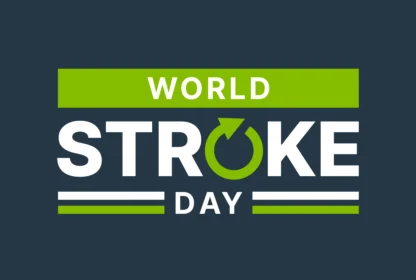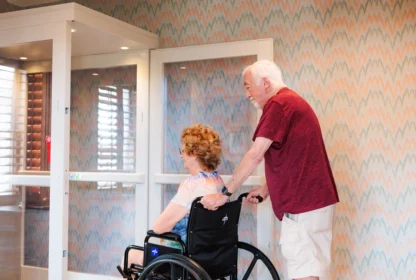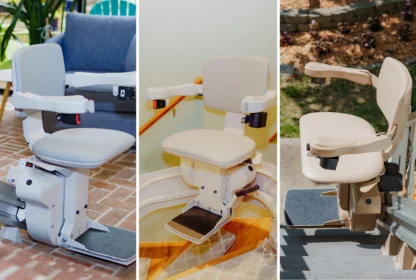
It’s tax time again! Durable medical equipment and home modifications to help you or a loved one comfortably age in place can get expensive. Fortunately, you can recoup some of the expenses by deducting the cost of the items on your taxes. To help you determine what is and is not eligible and answer questions such as “Is a stair lift tax-deductible?”, we’ve compiled this handy guide.
*Note: This information is not a complete or exhaustive guide. This information is accurate as of February 16, 2017, in accordance with the sources cited. For complete tax deduction information, contact a Certified Public Accountant
What is a Deduction?
According to Wikipedia, a “Tax deduction is a reduction of income that is able to be taxed, and is commonly a result of expenses.” Many areas allow taxpaying individuals to subtract certain personal expenses from their taxable income. In the U.S., these expenses are referred to as “itemized deductions”. Some such items include medical expenses, property taxes, and donations to qualifying charities.
When filing your taxes, you generally have the option to select the “Standard Deduction” or to “Itemize Deductions”. According to TurboTax, “The benefit of itemizing is that it allows you to claim a larger deduction than the standard deduction.” Consult your accountant or look for the 1040 form if you use a program or online service to complete your taxes.
When deciding whether to itemize, you need to remember that you will be giving up the standard deduction. Therefore, after adding up your itemized deductions, you need to make sure the total is greater than the standard deduction for your filing status. If it’s not, then you will actually pay more in tax if you itemize.
Are Medical Expenses Deductible?
According to efile.com, “The IRS allows you to deduct a certain amount of medical expenses if you itemize deductions. Qualified medical deductions are expenses you paid during the tax year for yourself, your spouse, or your dependents.”
“Qualified Medical Deductions” refer to the costs associated with the “diagnosis, cure, mitigation, treatment, or prevention of any disease recognized by the medical community… and the costs for treatments affecting any area or function of the body” (efile.com). This includes equipment, supplies, and diagnostic devices required for the above purposes.
Furthermore, not all qualified expenses count for deduction purposes. According to turbotax.com, “Medical expenses are only deductible to the extent that they exceed 10% of your Adjusted Gross Income (AGI). If your AGI is $75,000, for example, the first $7,500 of qualified expenses (10% of $75,000) don’t really count for deduction purposes.”
Is Your Equipment “Medically Necessary”?

Medical equipment must be considered “medically necessary” in order to qualify for a deduction. To prove that certain equipment or home modifications are medically necessary, you will need a written recommendation from your doctor. Without a written recommendation, you may not be able to deduct the cost of your equipment – regardless of how necessary you may consider it to be.
Which Equipment and Modifications are Eligible?
Home improvements (or capital expenses) that may be deducted per the IRS.gov are as follows:
- Entrance or exit ramps for your home
- Widening doorways at entrances or exits to your home
- Widening or otherwise modifying hallways and interior doorways
- Installing railings and grab bars, either in bathrooms or other areas of the home
- Lowering or modifying kitchen cabinets and equipment
- Moving or modifying electrical outlets and fixtures
- Installing porch lifts and other forms of lifts
- Modifying fire alarms, smoke detectors, and other warning systems
- Modifying stairways (including the addition of stair lifts)
- Modifying hardware on doors
- Modifying areas in front of the entrance and exit doorways
- Grading the ground to provide access to the residence
Only reasonable costs to accommodate a home to a disabled condition are considered medical care. Additional costs for personal motives, such as for architectural or aesthetic reasons, aren’t medical expenses.
In addition to the cost of the equipment itself, you can also deduct the cost to operate and maintain your equipment. So save your receipt for that stair lift service call – you might be able to deduct it!
Note: You can only itemize these deductions if the main purpose of the installation is medical care for you, a spouse, or a dependent (modifications made for aesthetic, architectural, or other personal reasons do not qualify). Permanent improvements that boost your property’s value may be partly included as a deduction; in this case, the cost of the home modification is reduced by the amount of the property value increase (whatever the difference is what your qualified medical expense to deduct will be). If the home modification does not increase your property value, you can deduct the whole cost as a medical expense.


